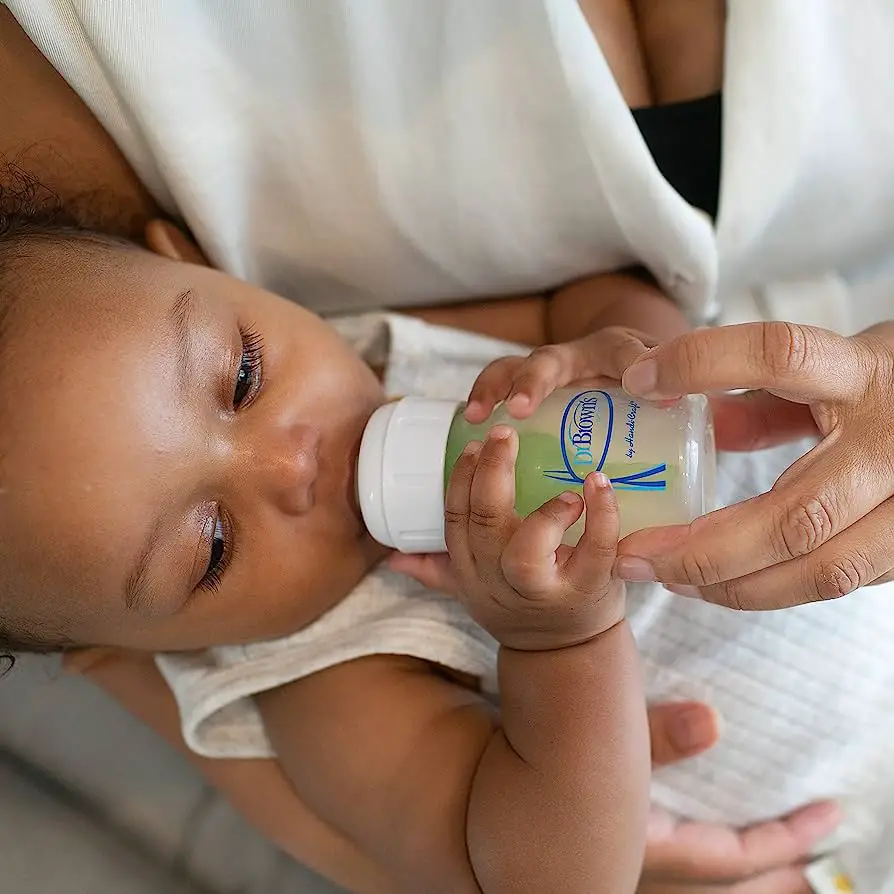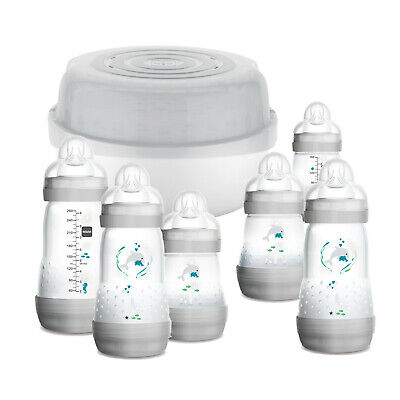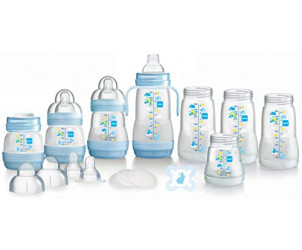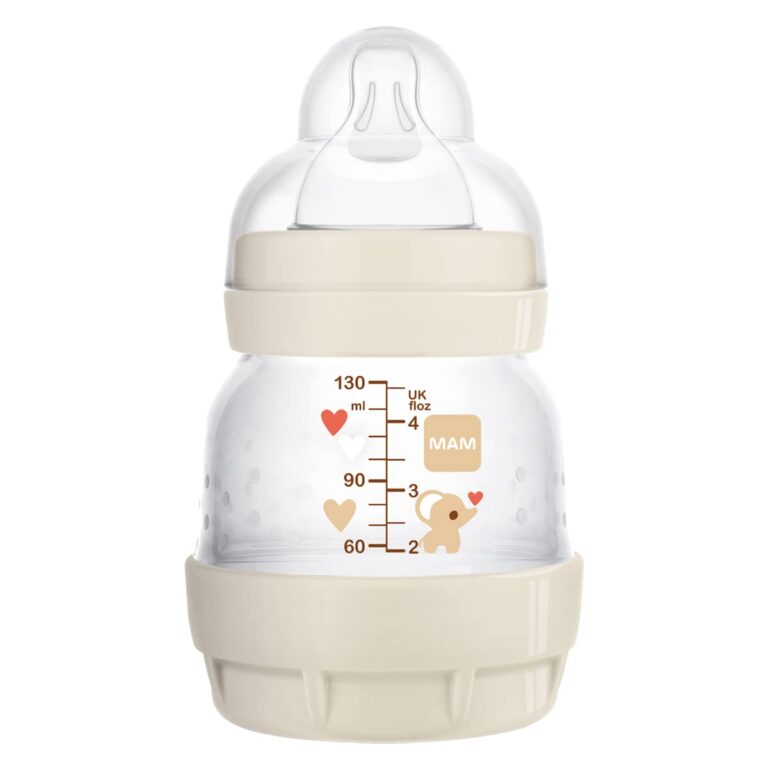Are you preparing to welcome your second bundle of joy and wondering what baby gear you can reuse from your first child? The good news is that there are many items that you can safely reuse, such as prams, clothes, and toys. However, when it comes to baby bottles, there are some important considerations to keep in mind. While the bottles themselves can typically be reused, the nipples or teats should always be replaced. In this blog post, we’ll explore the factors to consider when deciding whether to reuse baby bottles for your second baby.
A. Saving money by reusing baby gear
Preparing for a new baby can be exciting, but it can also be expensive. Many parents find themselves asking if they can reuse baby gear for their second child. The answer is yes! Reusing items such as strollers, cribs, and baby clothes can save a lot of money. However, it’s important to evaluate the condition of the item before reuse. Some items, such as car seats, should always be bought new for safety reasons. It’s also crucial to properly clean and sanitize items such as baby bottles and teats before use. By doing so, parents can save money and help the environment by recycling baby gear. With the proper attention to detail and care, reusing baby gear can be a smart and safe way to prepare for a new addition to the family.
B. Can baby bottles be reused for second baby?
Yes, baby bottles can be reused for a second baby as long as they are properly cleaned, sanitized, and in good condition. It’s important to note that the nipples or teats should always be replaced, as they are not designed to be long-lasting and can pose a safety risk if reused. If the bottles are glass or plastic containing BPA, it is not safe to reuse them. Glass bottles are becoming more popular due to their BPA-free composition and ease of cleaning. Recent studies have suggested that plastic bottles may contain harmful chemicals, including BPA, that could be unsafe for infants and young children. When reusing baby bottles, make sure to check for imperfections, such as leaks, dents, or strange marks that could indicate the presence of mold. By cleaning and properly assessing the condition of the bottles, you can save money and reduce waste while ensuring the safety of your little one.
II. Reusable Baby Items
A. Prams, baby furniture, clothes, and toys
When it comes to reusing baby gear for a second child, prams, baby furniture, clothes, and toys are all fair game as long as they’re still in good condition. These items can get quite pricey, so it makes sense to try and reuse them if possible. If you’ve invested in a quality pram, it should last for years and be able to handle a second child. Baby furniture can also be repurposed for a second baby’s room, just make sure to check for any damages or recalls. Clothes that are still in good condition can be reused, especially since babies grow up so quickly. Toys can also be reused as long as they’re not broken and don’t pose a safety hazard. When preparing for a second child, it’s important to distinguish between what can be reused and what should be replaced for safety reasons. With some careful consideration, reusing baby gear can save you money and help reduce waste.
B. Bottles (if in good condition and BPA-free)
When it comes to reusing baby bottles for your second child, it is important to assess their condition to ensure their safety. Bottles that are still in good condition and are BPA-free are safe to reuse. However, it is important to always replace the nipples or teats. These can harbor germs and bacteria if not cleaned properly and can also wear out quickly with frequent use, affecting milk flow in the process. Glass bottles have also become a popular choice for parents reusing baby bottles, as they are BPA-free and can be easily cleaned and sterilized in hot water. However, it is important to check for any imperfections such as chips, cracks, or strange marks on the surface or inside the container, which could indicate the presence of mold. When assessing whether to reuse baby bottles, it is essential to prioritize your child’s safety and health over saving a few dollars.
C. Shoes (assess condition before reuse)
When it comes to reusing baby gear for a second child, shoes may not be the first item that comes to mind. However, it’s important to assess the condition of any shoes before reusing them. According to current guidance, shoes shouldn’t be worn by more than one child as they may have molded to the first child’s feet. While this may seem like an unnecessary precaution, it’s always better to err on the side of caution when it comes to your child’s safety. Before reusing shoes, take a close look at their condition. Consider factors such as wear and tear, how frequently they were worn, and whether they’re still a good fit for your child’s feet. Ultimately, whether or not to reuse shoes is up to you and depends on your personal comfort level. If in doubt, it may be best to buy new shoes for your second child to ensure they’re getting the best possible support and protection for their growing feet.
III. Items to Replace for Each Child
A. Mattress
When it comes to reusing baby gear for your second child, there are a few items that you definitely need to replace, and one of these is the mattress. Although it may seem like a cost-saving option to reuse the same mattress, it’s not worth the risk. Research has shown that there is an increased risk of SIDS when a mattress is reused by a sibling. This is why it’s recommended that you buy a new mattress for each child. Even if the mattress is in good condition and has been kept in storage, it still poses a potential health hazard to your baby. So instead of taking the risk, it’s better to invest in a new mattress for your baby’s safety and peace of mind. A new mattress may require a bit more investment upfront, but it’s a small price to pay for your child’s safety and wellbeing.
B. Car seat (if in an accident or older)
As a parent, one of the most crucial gears for your baby’s safety is the car seat. It’s important to note that car seats that have been in an accident, no matter how minor, should never be reused. Even if there are no visible damages, there could still be unseen structural damages that could put your baby’s safety at risk. Additionally, car seats have expiration dates, so double-check the label before using one that’s been in storage for a while. If the date has passed, it’s time to buy a new one. Remember that technology and safety standards are continually advancing, so investing in a new car seat for your second baby is a smart move. Yes, it may seem like a significant expense, but your baby’s safety is worth every penny. Don’t compromise your baby’s safety by reusing a car seat that’s not recommended. Keep them safe with proper car seats always!
C. Teats (replace for bottle feeding)
When it comes to bottle feeding a second baby, reusing old bottles might seem like a thrifty way to save some money. However, it’s important to keep in mind that teats should always be replaced for each child. While the bottles themselves can generally be reused as long as they are in good condition and free of BPA, teats are not designed to last forever and can break down over time. Even if they appear to be in good condition, it’s best to err on the side of caution and replace them. The risk of a teat breaking or splitting during feeding is not worth taking. Additionally, it’s important to note that teats made from silicone or rubber both break down over time, and repeated washing and exposure to heat can speed up this process. By replacing teats for each child, you can ensure that your baby’s feeding experience is as safe and comfortable as possible.
D. Dummies
When it comes to dummies, unfortunately, these are one of the few items that you cannot reuse for a second baby. While there is no firm evidence, dummies that have already been used by one child can be cracked or have damage to the plastic. So it’s a better idea to pick up a new set for each baby. We know it seems like an unnecessary expense, but your baby’s safety is paramount. Plus, it’s a great excuse to buy some cute new dummies! When choosing dummies for your baby, opt for BPA-free ones that are designed for their age range. Dummies should be replaced every two to three months, or earlier if they become worn or damaged. It’s also important to regularly check the dummy’s condition and clean it properly to reduce the risk of infections. With so many cute and fun designs available, finding dummies that your baby will love is easy. Trust us, the peace and quiet they provide will be worth the investment!
IV. Safety Considerations When Reusing Bottles
A. Clean and sanitize bottles properly
When it comes to reusing baby bottles for your second child, it’s important to always clean and sanitize them properly. After all, your baby’s health and safety is the top priority. Start by hand-washing the bottles with warm soapy water, making sure to scrub all the nooks and crannies. Then, sterilize the bottles by boiling them in water for 5 minutes or using a sterilizer. It’s also crucial to replace the nipples for each child, as well as checking for any imperfections or mold. Glass bottles are a great option as they are BPA-free and easy to clean, but make sure to check for any chips or cracks. Plastic bottles can be safe for reuse if they are fairly new and BPA-free, but replacing them may be necessary if there is a significant gap in baby spacing. By properly cleaning and sanitizing baby bottles, you can reuse them safely and save money in the process.
B. Replace nipples for each child
Replacing nipples for each child is an essential step when reusing baby bottles. As babies grow, so does the size of their mouth and their feeding needs change. A nipple that was previously appropriate for one child might not be suitable for another. Furthermore, repeating the use of a nipple can cause it to wear out, leading to a higher risk of leaks and tears. Additionally, an old nipple can also contain harmful bacteria that can lead to health issues for your child. It’s best to replace nipples for each child when reusing baby bottles. There are several indications that let you know when it’s time to replace the nipple, such as changes in the flow of the milk, discoloration, thinning, cracks, tears, and other signs that show wear. Replacing the nipple is a small price to pay for the safety and comfort of your child during feeding time.
C. Check for imperfections or mold
When considering reusing baby bottles for your second child, it’s important to check for imperfections or mold before doing so. Bottles can take a lot of abuse over time, especially if they were a favorite toy for your older child at some point. Check for dents and leaks by filling the bottle with warm water. If they leak, it’s time to get new bottles. Depending on how you stored your bottles, you might notice some discoloration or strange marks on the surface or inside the container. This could be mold, which is dangerous to your little one’s health. If you see anything weird, replacing your bottle might be a better option. However, if it’s just dust, a good warm soapy wash will do the trick and your bottles are ready to use. Remember that your child’s safety comes first, and it’s always better to err on the side of caution. By checking for imperfections and mold, you can ensure that your baby’s bottle is safe to use and that you’re providing them with the best care possible.
D. Glass bottles vs plastic
When it comes to the debate between glass and plastic bottles, there is no clear winner. Glass bottles do have some advantages; they are easier to clean and sterilize in hot water and are extremely durable. They won’t scratch or warp when washed with a bottle brush. Additionally, glass bottles are BPA-free, which is a major concern with plastic bottles. However, glass bottles are also cumbersome and easily breakable, which can be a deal-breaker for some parents. Plastic bottles are more lightweight and easier to carry around than glass bottles. They are also less expensive, which is important when you are considering cost-effectiveness. It’s important to check what type of plastic the bottle is made of, as some contain harmful chemicals such as BPA. Ultimately, the choice between glass and plastic bottles is up to personal preference and what works best for your family.
V. Controversies Surrounding Reused Plastic Bottles
A. Studies suggest plastic bottles may be unsafe for infants
Recent studies have suggested that plastic baby bottles could be unsafe for infants and young children. The chemical Bisphenol A or BPA, which is found in certain plastics, can leach into food or drinks. Exposure to BPA has been linked to developmental, reproductive, and neurological problems in infants and children. As such, it is important to check for BPA-free bottles when reusing old ones. Additionally, when deciding whether or not to reuse plastic bottles, parents should consider the condition of the bottle, look for imperfections, and sanitize them properly. It is also important to replace the nipple for each child. If the hole is too big, it can cause choking, but if it’s too small, the baby may not get enough milk or formula. Following these guidelines will help ensure that babies are not exposed to harmful toxins and reduce the risk of developmental problems. It’s always better to err on the side of caution when it comes to your child’s safety and health.
B. Importance of checking for BPA-free bottles
It’s important to check that the baby bottles you’re reusing are BPA-free, as this chemical has been suggested to be harmful to infants and young children. Bisphenol A (BPA) is commonly used in plastic products, including baby bottles. While studies have shown that the levels of BPA in baby bottles are low, it’s better to err on the side of caution and choose BPA-free bottles. Fortunately, many baby bottle manufacturers have now switched to producing BPA-free bottles. When you’re looking for baby bottles to reuse, make sure to check for the BPA-free label. It’s also worth noting that glass baby bottles are a great alternative to plastic ones, as they are naturally free of BPA. Reusing baby bottles can be a great way to save money, but it’s important to prioritize your child’s safety by ensuring that the bottles you’re reusing are free of potentially harmful chemicals.




